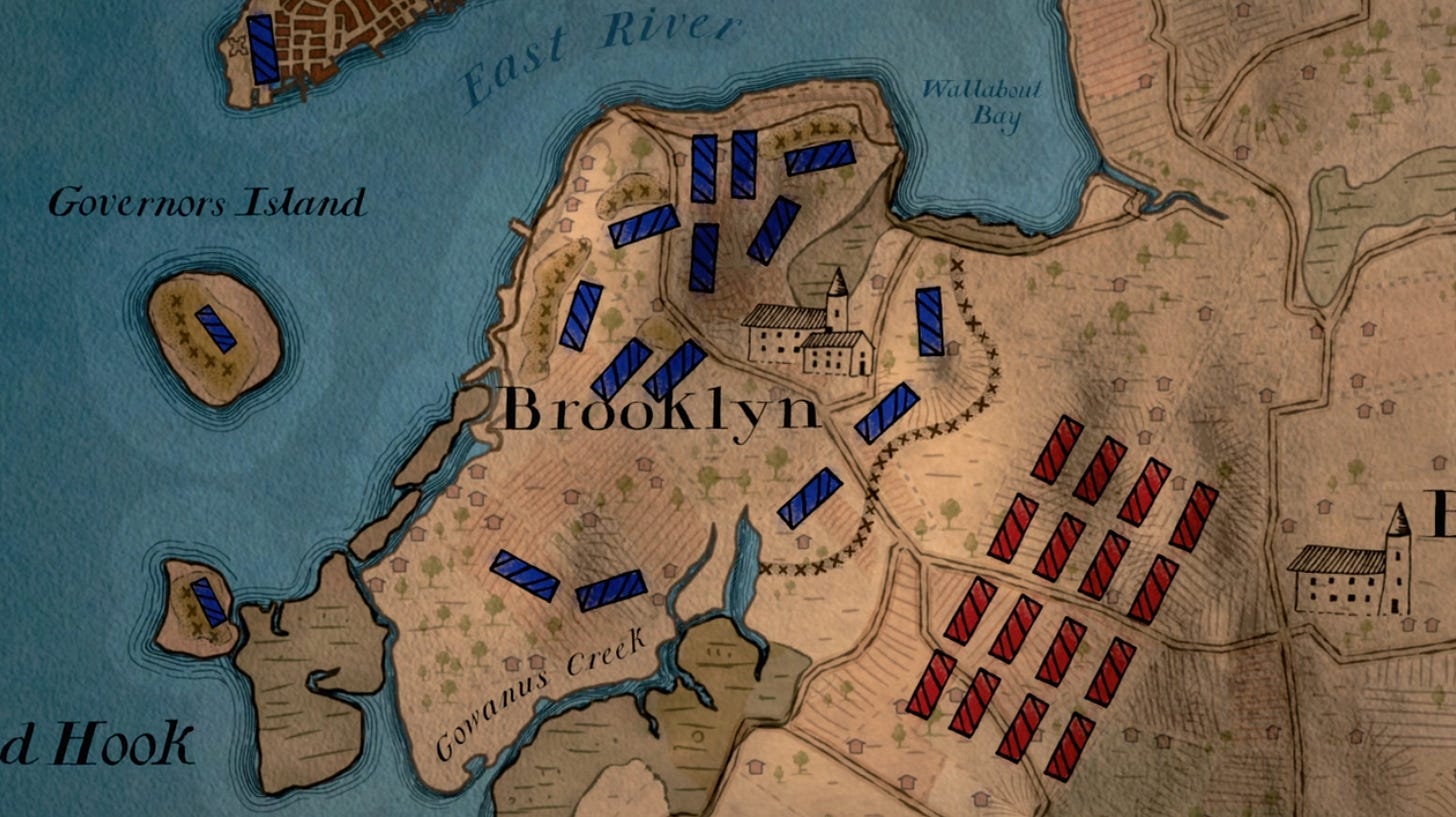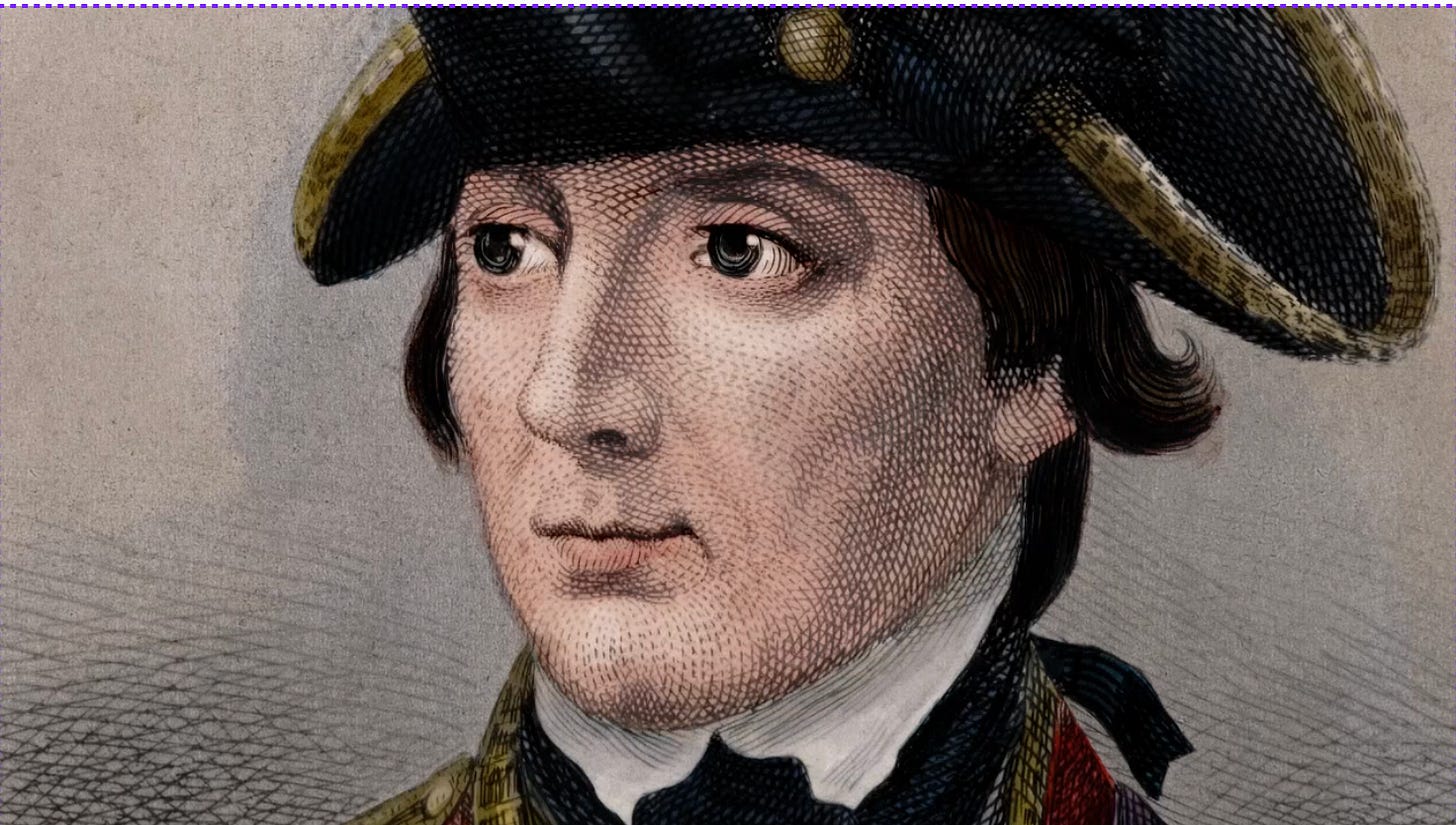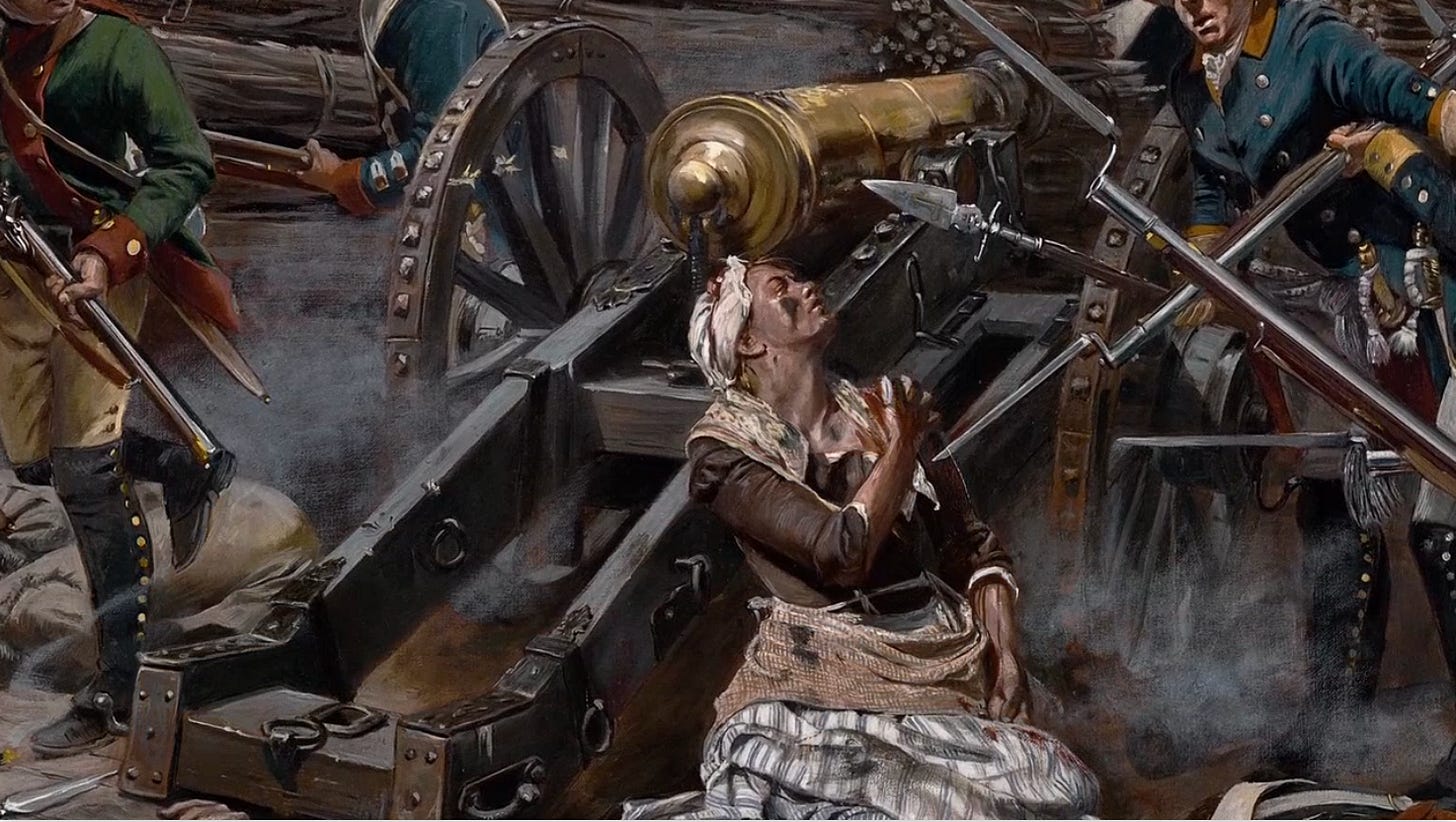Episode 3 of The American Revolution
Hot take on General Howe + PA's radical constitution and more
Hi you,
I’m back with a quick reaction to Episode 3 of The American Revolution, Ken Burns’s epic 12-hour biopic? Biodoc? Binge TV series? You can also find my thoughts on episodes 1 and 2.
In this recap here are the highlights
Hot Take on British Gen. William Howe (secret patriot)
Pennsylvania’s Radical AF Constitution
Women in War
Critiques of Burns from an historian
If you’re new, welcome. I’m Baratunde. I tell it like it is and the way it can be, integrating culture, politics, technology and climate into my work. For a focus on technology, see our
media co.Episode three continues the focus on very specific military campaigns with maps and reenactments and lots of detail I realize I am just not that into. Maybe I watched too many WWII documentaries on History Channel and Netflix but I don’t get as compelled by the play-by-play of battles as I do the larger social and cultural contests playing out in people’s behaviors, newspaper writings, and other off-battlefield activities.
That said…
General Howe Was a Patriot
I said what I said. It’s the only way to explain how he kept letting George Washington and the Continental Army get away. The documentary has mentioned several times that Howe was sympathetic to the American cause before he saw an opportunity for personal advancement if he led the British military crackdown on the colonies. As episode 2 told us, “ Howe had once expressed sympathy with the American cause, but he now saw an opportunity to burnish his reputation as a soldier.” But, I just don’t know how to explain Howe letting Washington “slip” away from Brooklyn and from Harlem other than he was Team America at the end of the day. That’s my hot take.
Also the idea of European forces displacing local inhabitants of Brooklyn and Harlem is proof that white folks have been gentrifying these neighborhoods since the very beginning. Even if it means displacing other white folks!

Pennsylvainia’s State Constitution Was Radical AF
I did not know that the 13 colonies-becoming-states were essentially synchronizing their constitutions to be aligned with a national constitution. They were generally aligned but Pennsylvania was more down for the people than anyone else (Philly has always been home to real ones).
All of the new constitutions would guarantee freedom of the press fair trials and due process under law. And made sure power rested, not with autocratic governors, but with legislators elected by propertied men.
Pennsylvania took things a step further. They created the most egalitarian constitution in the new United States with the Bill of Rights, and the one house legislature elected by tax paying working men as well as property owners, all of which worried many of the delegates downstairs
This moment was immediately followed by a line from historian William Hogeland:
People were committed to using the revolution to make it a real social revolution, a real economic revolution, and get free working people, US men, white men, a say in government, um, which was a radical idea at the time. John Adams wasn’t for that. Samuel Adams wasn’t for that.
Y’all got my attention. An economic and cultural revolution. Let’s go! So what happened?
For this I turned to “research mode” in the Perplexity AI tool. You can access the full, brief, report yourself, but suffice it to say Pennsylvania was very much an outlier and this experiment did not last.
The bot, because it actually cites real sources, led me to this 2022 article by Anthony Sanders, director of the Center for Judicial Engagement. He was writing about a mail-in voting decision of the state’s Supreme Court and the challenge of courts looking to a states constitution when there have been many versions of those documents. He wrote,
The 1776 Constitution was perhaps the best example of legislative supremacy in American history. The legislature was almost all powerful, with no independent executive branch, unicameral, and subject to annual elections. After this the state quickly grew tired of this abundance of democracy and the 1790 Constitution heavily cut back on legislative powers and created a more standard tripartite state government.
War Is Bad
I was struck by the excerpt from this letter to the printer in a British newspaper by someone reflecting on the British victory in Long Island
Because the last action was in our favor, we think we ought to succeed in the next, but Liberty takes a great deal of killing, and the courage of free men is the same thing on both sides of the Atlantic. The Americans are daily improving in arms and in hatred. We see only the beginning of sorrows. Benefits to neither; misery to both
That’s a pretty good way of describing war. I added emphasis to the hatred part because every occupying force learns that murdering and brutalizing people just makes them oppose you more. But that line “liberty takes a great deal of killing” is about the commitment of people to their own self-determination. That line could apply to the brutal crackdown on the rebellions of enslaved people, or how the French treated the people of Haiti
Women Were Shooting
Big up to Margaret Corbin. Hadn’t heard of her until last night.
From the episode:
Margaret Corbin, a Pennsylvania Artman’s wife, was standing near her husband when he was mortally wounded. She stepped in and kept up such deadly fire that her position became a target for Hessian guns. Grapeshot eventually hit her jaw and breast and rendered her left arm useless. Three years later, she would become the first woman to receive a lifetime disability pension, but at half the rate wounded men received.
Of course.
If you want to learn more about Corbin and other less-recognized women of the war effort, see this fact-checkable AI-generated research.
Introducing a More Critical Voice on Burns
I came out the gates very excited after episode 1 and literally offered Ken Burns his flowers for expanding the narrative of America’s founding moment. Episodes two and three have calmed that excitement as I’ve pointed out some shortcomings. But there’s another voice I want to highlight in this conversation about The American Revolution. Thanks to comments on my Instagram reel about episode 1, I heard about public historian
Here’s a taste of his reflections on the series. The entire thing is paywalled but after I dig in further I’ll try to synthesize the insights. Meanwhile if you want a gift subscription, ask in the comments and I’ll share the handful i was offered to pass out.
As always, share what you’re feeling, seeing, celebrating, and asking as you engage with this series about one version of America’s origin story.





No history is ever accurate. Burns has gone a long way to opening historical subjects to many people who are deeply ignorant about their own history. This particular piece seems to give much more voice to the people who have been left out of written texts - indigenous, slaves, women. Not perfect, but for the average viewer, more realistic and accurate.
General Howe took the A train to Harlem and when he got off the train some very cool cats were blowing and he stopped and stood on the stoop and listened until a Jamaican woman hollered out "Git in here!" and that was that.